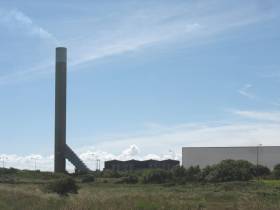Displaying items by tag: Anglesey Aluminium
Operator Stena Line Buys former Anglesey Aluminium Site in Holyhead
Operator Stena Line which also owns the Port of Holyhead has bought the former Anglesey Aluminium site.
Smelting came to an end at the site in 2009 - with Orthios later taking it on and developing a materials recycling facility.
But earlier this year the business collapsed with up to 100 staff losing their jobs. Begbies Traynor were appointed as administrator by the main investor and the land put up for sale.
Now Swedish ferry firm Stena - which has owned and operated Holyhead port for 27 years - has announced it has bought the 213-acre site. They said it was bought to facilitate the extension of the port’s operations in the area.
The firm said the new site has the potential to provide additional land and services to existing customers and attract new long-term uses and investment to Holyhead.
Ian Hampton, executive director, Stena Line UK Ltd, said: “This purchase is a significant investment for us and forms an important part of our long-term strategy for the future of Holyhead Port. Our plans for the site have the potential to be a significant boost for the regional economy and local jobs. Holyhead is the largest port we own and remains the second busiest RoRo port in the UK, as well as the main route to Ireland.
NorthWalesLive has more on the acquisition of the former industrial site.
Jobs Legacy from Anglesey Aluminium At Risk of Meltdown?
#ports&shipping - When the north Wales plant of Anglesey Aluminium closed its site in Holyhead there was a commitment of a ‘jobs’ legacy to bring new work into the port town.
The closure of smelting (2009) and then re-melt (2013) operations in the town writes The Daily Post took place after nearly 40 years and saw more than 500 well paid jobs lost.
Bosses at parent firm Rio Tinto said at the time that the sprawling site and surrounding land owned by the company could help create a bright jobs future.
The future certainly looked positive with two major schemes put forward.
On the site itself Lateral Power (later Orthios Power) proposed an ambitious 500 job biomass and food plant project while Land and Lakes unveiled a scheme to develop a £120m holiday village - creating up to 600 jobs.
But both schemes have suffered major setbacks recently that now put them at serious risk.
For more including photos of the former plant, click here.
Asides the vital role of the ferry industry contributing to the port town's economy, Afloat adds that the cruise-sector is another business that has seen large ships visit the port of up to around 110,000 gross tonnage.
These ships are those belonging to the 'Grand' class operated by US brand, Princess Cruises. Among them is Caribean Princess which tends to make overnight cruise legs between Dublin Port and the Anglesey port.





























































